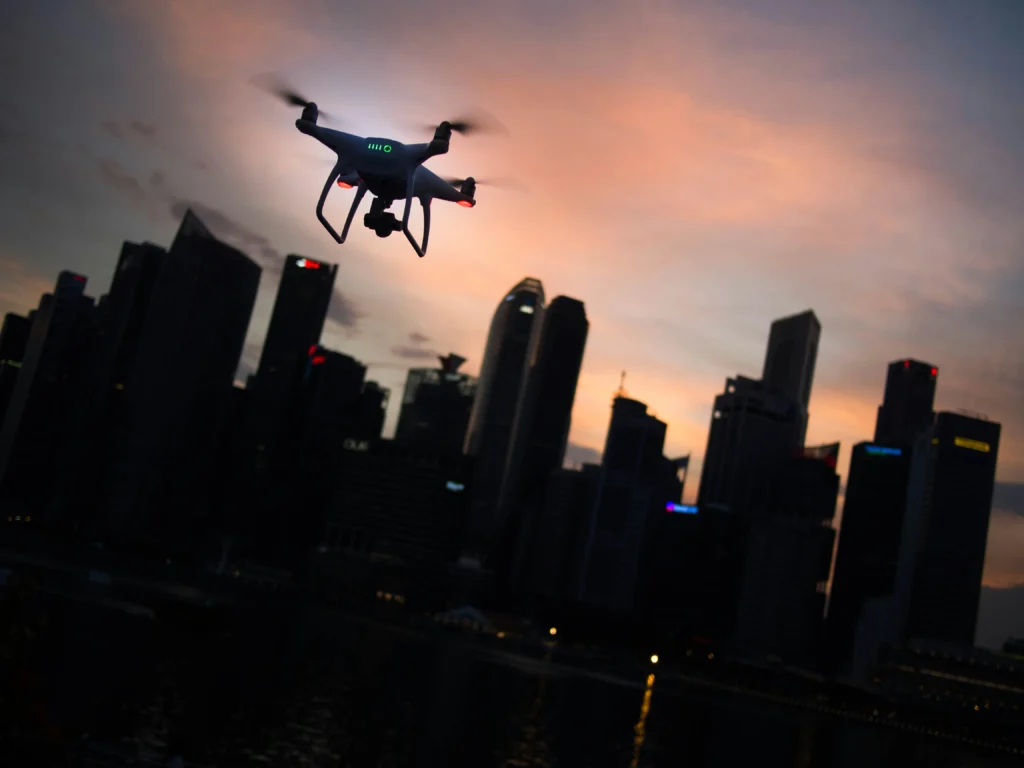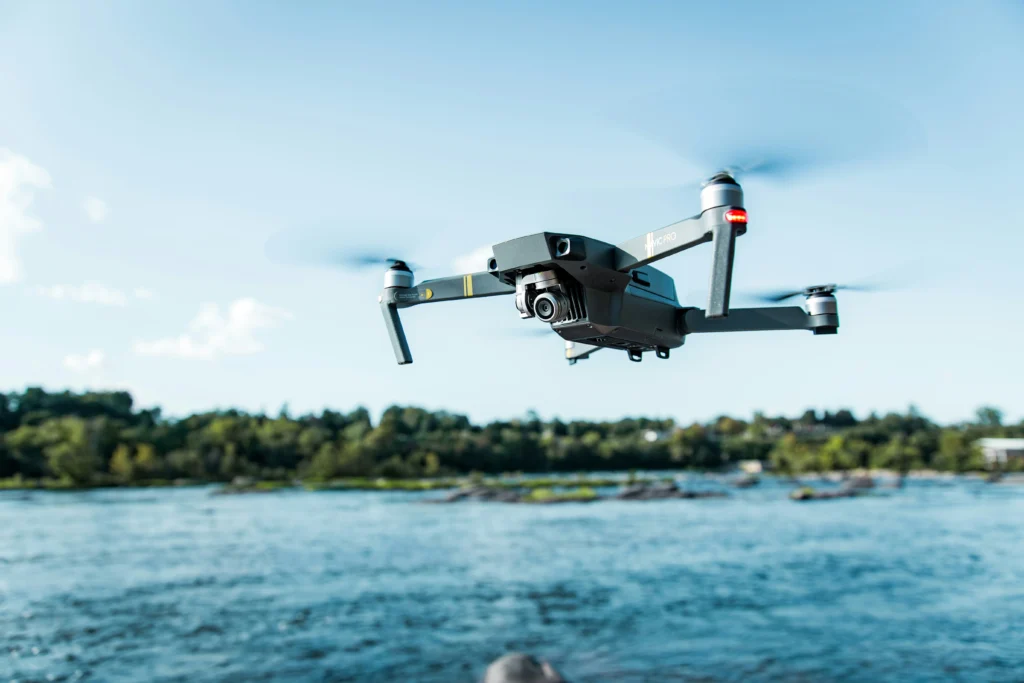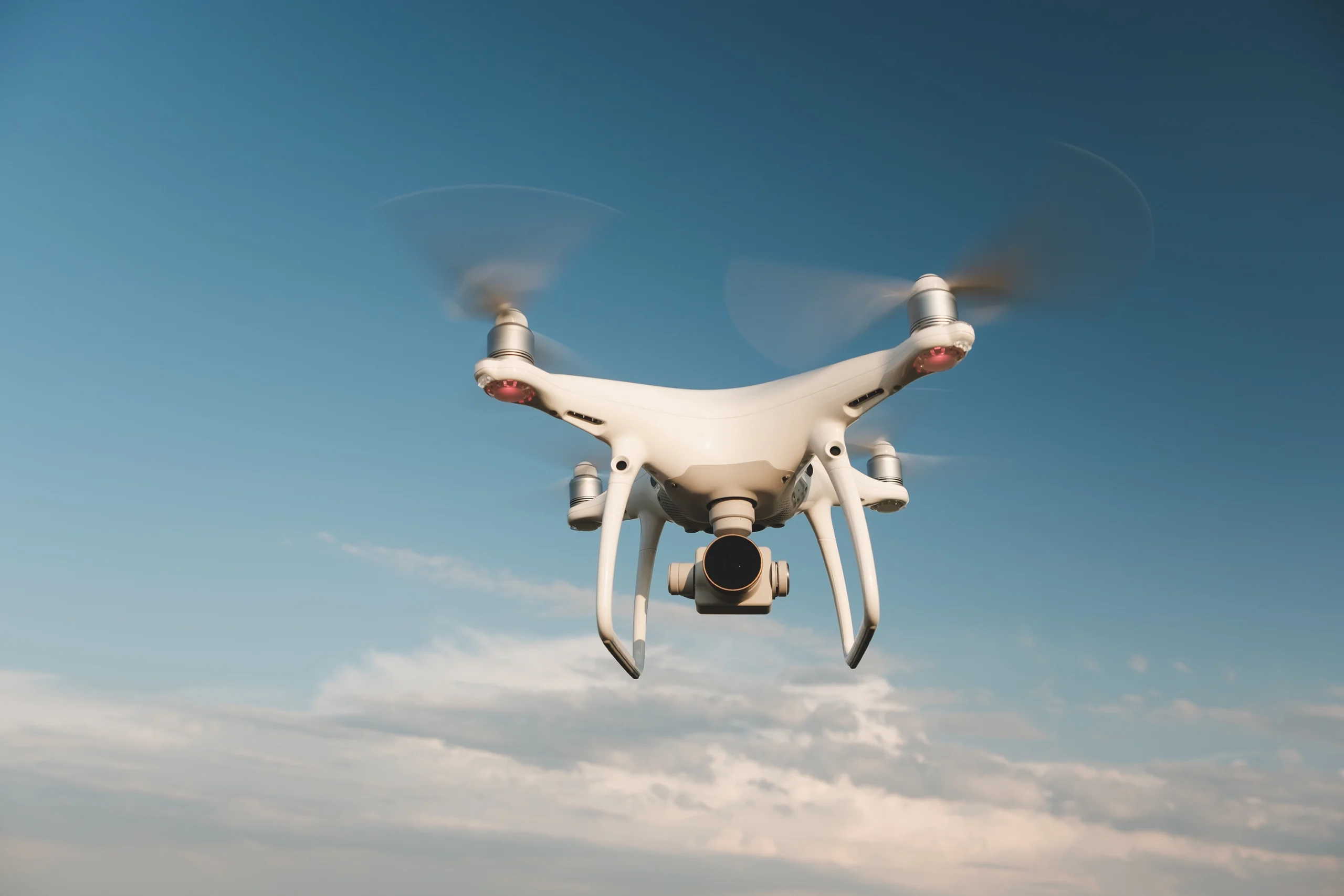Drone photography is a cutting-edge field that involves capturing images and videos from an aerial perspective using unmanned aerial vehicles (UAVs), commonly known as drones.
A drone photographer is a professional who specializes in capturing aerial images and videos using unmanned aerial vehicles, commonly known as drones.
This technology allows photographers to achieve unique and stunning viewpoints that were once only possible with helicopters or planes.
In this article, we will discuss how to become a drone photographer. What qualifications and certifications do you need and how much can you make as a drone photographer?
Learn the Basics of Photography
To become a successful drone photographer, it is important to have a solid understanding of basic photography principles. Mastering the fundamentals will allow you to capture high-quality images that stand out. Here’s a brief overview of key concepts and techniques:
Understanding Camera Settings (ISO, Shutter Speed, Aperture)
ISO: ISO measures the sensitivity of your camera’s sensor to light. A lower ISO (100-200) is ideal for bright conditions, while a higher ISO (800 and above) is better for low-light situations. However, increasing the ISO too much can introduce noise into your photos, so it’s important to find the right balance.
Shutter Speed: Shutter speed refers to the length of time your camera’s shutter is open to allow light to hit the sensor. Fast shutter speeds (1/1000 or faster) freeze motion, which is great for capturing sharp images of moving subjects. Slow shutter speeds (1/30 or slower) create motion blur, useful for artistic effects or low-light conditions.
Aperture: Aperture is the size of the opening in your lens that lets light into the camera. It’s measured in f-stops (e.g., f/2.8, f/5.6, f/16). A lower f-stop (wider aperture) allows more light and creates a shallow depth of field, blurring the background. A higher f-stop (narrower aperture) lets in less light and keeps more of the scene in focus.
Composition Techniques
Composition is the art of arranging elements within your frame to create a visually appealing photograph. Here are some key techniques:
Rule of Thirds: Imagine your frame divided into nine equal parts by two horizontal and two vertical lines. Placing your subject along these lines or at their intersections creates a balanced and engaging composition.
Leading Lines: Use natural lines in your scene, such as roads, rivers, or pathways, to lead the viewer’s eye toward the main subject of your photo.
Framing: Utilize natural elements like trees, archways, or windows to frame your subject. This technique adds depth and focuses attention on the main subject.
Symmetry and Patterns: Symmetrical scenes and repetitive patterns can create striking images. Look for symmetry in architecture, nature, or reflections.
Lighting Tips for Aerial Photography
Lighting plays a crucial role in photography, and this is especially true for aerial shots. Here are some tips for optimizing lighting in your drone photography:
Golden Hour: The period shortly after sunrise and before sunset, known as the golden hour, provides soft, warm light that enhances colors and adds depth to your photos. This is often the best time for aerial photography.
Avoid Midday Sun: The harsh, direct light of midday can create strong shadows and high contrast, which may not be ideal for most shots. If you must shoot at this time, consider using filters to manage the brightness.
Use HDR Mode: Many drones come with an HDR (High Dynamic Range) mode, which captures multiple exposures and blends them to create a well-balanced image with detail in both the shadows and highlights.
Monitor Weather Conditions: Cloudy or overcast skies can diffuse light, reducing harsh shadows and creating a soft, even light. Conversely, dramatic weather conditions like fog or mist can add a unique atmosphere to your shots.
By mastering these basics of photography, you’ll be well on your way to capturing stunning aerial images that truly stand out.
Is It Important to Get a License to Become a Professional Drone Photographer?

Gaining certificates is important for becoming a professional drone photographer for several reasons. Commercial photography involves taking photographs for business purposes. The primary goal is to promote, advertise, or sell products, services, or brands.
In many countries, operating a drone for commercial purposes requires certification. For example, in the United States, the Federal Aviation Administration (FAA) mandates that drone pilots obtain a Part 107 certification to fly drones commercially. This ensures that pilots understand the rules and regulations for safe drone operation.
FAA has the following requirements you must follow:
- Be at least 16 years of age.
- Have the ability to read, speak, write, and understand English.
- Be physically and mentally fit to operate a drone safely.
- Successfully completed the initial aeronautical knowledge test: “Unmanned Aircraft General – Small (UAG).”
Practice Flying Your Drone
Practicing flying your drone is essential for gaining confidence and proficiency in drone operation. Mastering drone controls is crucial not only for capturing stunning aerial shots but also for ensuring safety during flights.
Familiarity with the controls allows you to respond quickly to unexpected situations, navigate complex environments, and execute precise maneuvers.
To ensure safe and effective flying, start by practicing in open, obstacle-free areas to get comfortable with basic maneuvers such as takeoff, landing, and hovering. Gradually introduce more complex exercises, like flying in a figure-eight pattern, to improve your control and coordination.
It is quite common for beginners to experience crashes and mishaps when learning to fly a drone. Many drones have a beginner mode that limits speed and altitude, making the drone easier to control.
Beginner-friendly drones with safety features include the DJI Mini 2, which offers GPS, return-to-home, and stable flight, the DJI Air 2S with obstacle sensing, GPS, and advanced flight modes, and the Ryze Tello, which is affordable, stable, and easy to repair.
Online Courses
Online courses offer accessible and in-depth learning opportunities tailored to drone photography. These courses cover essential topics such as drone operation, aerial photography techniques, legal considerations, and post-processing skills. They often provide flexibility in learning pace and allow you to study from anywhere, making them ideal for self-paced learning and skill enhancement.
Participate in workshops and hands-on training sessions that provide practical experience that complements theoretical knowledge gained from online courses.
These sessions are led by industry experts and focus on real-world applications, allowing you to refine your flying skills, master advanced photography techniques, and troubleshoot common challenges.
Here are some popular online resources where you can find courses and resources for drone photography:
Udemy: Offers a wide range of drone photography courses, from beginner to advanced levels, covering topics like aerial videography, editing techniques, and drone piloting skills.
Drone Pilot Ground School: Provides FAA Part 107 exam prep courses, covering regulations, airspace, weather, and more. They also offer continuing education courses for drone pilots.
LinkedIn Learning: Formerly Lynda.com, offers courses on drone photography, cinematography, and drone operation. They also provide business skills training relevant to freelance drone photographers.
DARTdrones: Specializes in drone training and offers online courses and webinars on drone safety, flight techniques, and advanced aerial photography.
Drone U: Offers online training programs, including courses on drone cinematography, mapping, and inspection techniques. They also provide resources for drone business development.
Pix4D Academy: Focuses on drone mapping and photogrammetry, offering courses on software like Pix4Dmapper and Pix4Dfields for processing drone imagery.
DJI Educational Hub: Provides tutorials, guides, and courses specifically tailored for DJI drone users, covering both beginner and advanced topics in drone photography and videography.
Adobe Creative Cloud: Offers courses on Adobe software like Lightroom and Photoshop, essential for editing drone photos and videos.
YouTube: While not a formal course platform, YouTube hosts numerous channels dedicated to drone photography tutorials, tips, and reviews, making it a valuable free resource for learning.
Editing and Post-Processing

Editing and post-processing are essential steps in optimizing drone photos to achieve professional-quality results. Various software tools are available, with Adobe Lightroom and Photoshop being popular choices among drone photographers. These tools offer powerful features for enhancing colors, adjusting exposure, and sharpening details to bring out the best in aerial images.
Marketing Yourself
Showcase your best work with a professional portfolio that highlights different types of photography relevant to each client type (real estate, events, nature).
There are a lot more ways through which you can find the best clients for you such as:
Drone Photographer Job Outlook and Salary || How Much Can You Make As a Drone Photographer?
According to the US Bureau of Labor Statistics, In May of 2023, the typical hourly pay for photographers stood at $19.60.
The field of photography is expected to see a 4% growth in employment from 2022 to 2032, which is on par with the average rate across all occupations. On average, about 13,900 job openings for photographers are projected each year over the decade. These openings are largely due to the replacement of workers who transition to other careers or retire from the workforce.
You May Also Like:
FAQs
How to get into drone photography?
- Understand the basics of drone technology, photography, and videography. Online courses and tutorials can be very helpful.
- In many countries, including the US, you need to obtain a commercial drone pilot license (e.g., a Part 107 license from the FAA in the US).
- Purchase a reliable drone with a high-quality camera. Entry-level models like the DJI Mavic series are a good start.
- Gain experience by flying your drone and taking photos and videos. Practice in different settings and conditions.
- Create a portfolio showcasing your best work to attract potential clients.
- Join photography groups, attend industry events, and use social media to promote your work.
How do I start my drone photography business?
- Outline your business goals, target market, services offered, pricing strategy, and marketing plan.
- Ensure you have the necessary licenses, permits, and insurance for operating a drone business.
- Develop a professional brand, including a logo, website, and business cards.
- Purchase high-quality drones, cameras, and accessories.
- Use social media, SEO, and online advertising to reach potential clients. Networking and word-of-mouth are also important.
- Consider offering a range of services such as real estate photography, event coverage, aerial surveys, and promotional videos.
Is drone photography in demand?
Yes, drone photography is in demand across various industries, including:
- Real Estate: Providing aerial shots of properties for listings.
- Construction: Monitoring site progress and conducting inspections.
- Events: Capturing weddings, concerts, and other large gatherings from unique perspectives.
- Marketing and Advertising: Creating promotional content for businesses.
- Agriculture: Surveying crops and land management.
- Film and Media: Offering unique shots for movies, TV shows, and commercials.

